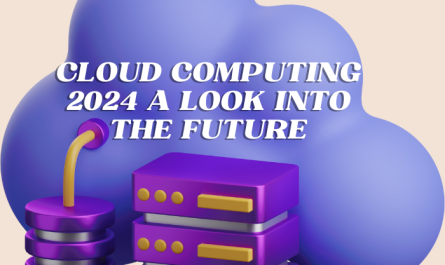Windows 11, with its sleek interface and modern features, promises a seamless computing experience. However, as with any operating system, performance can degrade over time, causing frustration and delays. Slow boot times, lagging applications, and general sluggishness can turn your once-speedy machine into a source of constant annoyance. Fortunately, optimizing Windows 11 for better speed and performance is entirely possible. Whether you’re a tech novice or an experienced user, following these practical steps can make a noticeable difference.
Understanding the Causes of a Slow PC in Windows 11
Before diving into specific solutions, it’s crucial to understand what might be slowing down your PC. Several factors can contribute to reduced performance, including:
- Background Applications: Many programs run in the background, consuming system resources without your awareness.
- Outdated Drivers: Old or incompatible drivers can cause hardware to underperform, leading to a sluggish system.
- Unnecessary Startup Programs: Too many applications launching at startup can significantly slow down boot times.
- Bloatware and Unnecessary Software: Pre-installed software and applications that you no longer use can clutter your system and hog resources.
- Fragmented Hard Drive: Although less of an issue with SSDs, a fragmented hard drive can still slow down file access times on older HDDs.
By addressing these issues, you can significantly improve your computer’s speed and efficiency.
Disable Unnecessary Startup Programs
Nothing can slow down your PC like a multitude of programs competing for resources as soon as you turn it on. To streamline your startup process:
- Open Task Manager: Press
Ctrl + Shift + Escto access Task Manager directly. - Navigate to the Startup Tab. Here, you’ll find a list of programs that launch when your computer starts.
- Disable Unnecessary Programs: Right-click on programs you don’t need at startup and select “Disable.”
This process will help your computer boot faster and be ready for use sooner.
Optimize Power Settings for Maximum Performance
Windows 11 offers various power plans that balance performance with energy consumption. To ensure your PC is running at its full potential:
- Go to Settings: Open the Start menu and click on
Settings > System > Power & battery. - Select a Power Plan: Under the “Power mode,” choose “Best performance.”
This setting prioritizes performance over energy savings, making it ideal for users who want to speed up their PC.
Update Windows and Drivers Regularly
Keeping your operating system and drivers up to date is essential for optimal performance. Manufacturers often release updates to fix bugs, enhance security, and improve hardware compatibility.
- Check for Windows Updates: Go to
Settings > Windows Update > Check for updatesto ensure your system is up-to-date. - Update Device Drivers: Visit the manufacturer’s website or use Windows Update to download the latest drivers for your hardware.
Updating regularly ensures that your PC runs smoothly and takes advantage of the latest improvements.
Uninstall Unnecessary Software and Bloatware
Over time, computers can become cluttered with programs and applications that you no longer use. These can slow down your system by consuming valuable resources.
- Access Installed Programs: Navigate to
Settings > Apps > Installed apps. - Uninstall Unused Programs: Identify and remove any software you no longer need.
Getting rid of these unnecessary applications can free up space and improve overall system performance.
Clear Temporary Files and Cache
Temporary files and cache data can accumulate over time, occupying significant storage space and potentially slowing down your PC. To clean up your system:
- Use Disk Cleanup: Search for “Disk Cleanup” in the Start menu, select the drive you want to clean, and follow the prompts to remove temporary files.
- Clear Cache: Clear browser cache and other application caches from their respective settings.
Regular maintenance like this keeps your storage clean and ensures that your system runs smoothly.
Enable Storage Sense
Windows 11 includes a handy feature called Storage Sense, which automatically cleans up temporary files and manages disk space. To enable it:
- Open Settings: Go to
Settings > System > Storage. - Turn on Storage Sense: Activate this feature to allow Windows to automatically free up space when needed.
Storage Sense can be customized to your preferences, making it easier to maintain a clutter-free system.
Defragment and Optimize Drives
Although fragmentation does not affect solid-state drives (SSDs) in the same way that it does traditional hard drives, Windows 11’s built-in optimization tool is still useful.
- Search for Defragment and Optimize Drives: Open this tool from the Start menu.
- Optimize Your Drives: Select your drive and click on “Optimize” to ensure your data is organized efficiently.
This step can improve access times and overall system performance, especially for those using HDDs.
Disable Visual Effects
Windows 11’s visual effects can be aesthetically pleasing but may consume resources that could be better used elsewhere. Disabling or minimizing these effects can lead to noticeable speed improvements.
- Open Advanced System Settings: Search for “View advanced system settings” in the Start menu.
- Adjust for Best Performance: Under the “Performance” section, choose “Adjust for best performance” or customize which effects you want to keep.
This change can free up resources and make your system more responsive, especially on older hardware.
Manage Background Applications
Even when not actively using certain applications, they may still run in the background, consuming valuable system resources. To manage these:
- Go to Settings: Navigate to
Settings > Apps > Installed apps. - Manage Background Activity: Click on individual apps and choose “Advanced options” to restrict background activity.
Controlling these settings ensures that only essential applications are running, leaving more resources for the tasks at hand.
Utilize ReadyBoost for Additional Performance
ReadyBoost is a feature that allows you to use a USB drive to boost your system’s performance. While it won’t match the speed of adding more RAM, it can still provide a noticeable improvement, especially on systems with limited memory.
- Insert a USB Drive: Make sure it has a decent amount of free space.
- Enable ReadyBoost: Right-click on the USB drive in File Explorer, go to “Properties,” and then select the “ReadyBoost” tab.
This feature is particularly useful for older systems that struggle with memory-intensive tasks.
Upgrade Hardware for Better Performance
Sometimes, software optimizations aren’t enough, and hardware upgrades become necessary. If you’re still experiencing slowdowns after trying all the above methods, consider upgrading the following components:
- RAM: Adding more memory can significantly boost performance, especially when multitasking.
- SSD: Upgrading from an HDD to an SSD can drastically reduce load times and improve overall speed.
- Graphics Card: For those using resource-intensive applications, a better graphics card can offer a noticeable improvement.
Investing in hardware upgrades can extend the life of your PC and keep it running smoothly for years to come.
FAQs
How can I speed up my PC without upgrading hardware?
You can speed up your PC by disabling unnecessary startup programs, optimizing power settings, uninstalling bloatware, clearing temporary files, and adjusting visual effects. Regularly updating your system and drivers also helps maintain performance.
What is Storage Sense, and how does it help?
Storage Sense is a feature in Windows 11 that automatically manages disk space by removing temporary files and other unnecessary data. Enabling it helps keep your system clean and running efficiently.
Is defragmenting still necessary with an SSD?
Defragmenting is less relevant for SSDs since they operate differently from HDDs. However, using Windows 11’s optimization tool can still help maintain peak performance.
How do I disable background applications in Windows 11?
You can manage background applications by going toSettings > Apps > Installed apps, selecting individual apps, and adjusting their background activity in the “Advanced options.”
What are the benefits of upgrading to an SSD?
Upgrading to an SSD offers faster boot times, quicker file access, and overall improved system responsiveness compared to traditional HDDs.
Can ReadyBoost replace adding more RAM?
ReadyBoost can enhance performance, but it won’t replace the benefits of adding more RAM. It’s a helpful tool for systems with limited memory but should be seen as a supplement rather than a replacement.




Superb post however I was wanting to know if you could write a litte more on this topic? I’d be very thankful if you could elaborate a little bit further. Thanks!